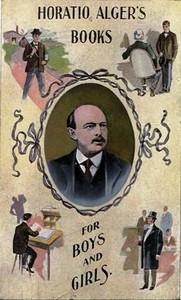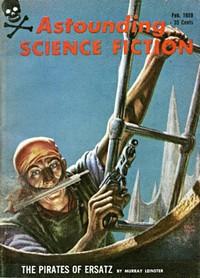Read this ebook for free! No credit card needed, absolutely nothing to pay.
Words: 39653 in 15 pages
This is an ebook sharing website. You can read the uploaded ebooks for free here. No credit cards needed, nothing to pay. If you want to own a digital copy of the ebook, or want to read offline with your favorite ebook-reader, then you can choose to buy and download the ebook.


: Photographic Reproduction Processes by Duchochois Peter C - Photographic reproduction of plans drawings etc.; Photography Printing processes Photography
A Tournette Chardon's method of coating
PREPARER'S NOTE
Please remember that this book was published over a century ago, long before today's chemical safety standards. Please get expert advice before attempting to perform any of the procedures described in this book.
INTRODUCTION.
The photographic processes with the salts of iron are all derived from the researches of Sir John Herschel. The investigations of that great philosopher are so valuable, so full of instructions that we are led to reprint them, together with those of Mr. C. J. Burnett, on the salts of uranium, etc., as an Introduction. It will be seen that the process by which blue prints are to-day obtained is exactly that Sir John Herschel devised in 1840.
"Paper simply washed with a solution of this salt is highly sensitive to the action of the light. Prussian blue is deposited . After half an hour or an hour's exposure to sunshine, a very beautiful negative photograph is the result, to fix which, all that is necessary is to soak it in water in which a little sulphate of soda is dissolved. While dry the impression is of a dove color or lavender blue, which has a curious and striking effect on the greenish yellow ground of the paper produced by the saline solution. After washing the ground color disappears and the photograph becomes bright blue on a white ground. If too long exposed, it gets 'over-sunned,' and the tint has a brownish or yellowish tendency, which, however, is removed in fixing; but no increase of intensity beyond a certain point is obtained by the continuance of exposure."
"If paper be washed with a mixture of the solutions of ammonio-citrate of iron and ferrosesquicyanate of potash, so as to contain the two salts in about equal proportions, and being then impressed with a picture, be thrown into water and dried, a negative blue picture will be produced. This picture I have found to be susceptible of a very curious transformation. To effect this it must be washed with a solution of protonitrate of mercury, which in a little time entirely discharges it. The nitrate being thoroughly washed out and the picture dried, a smooth iron is passed over it, somewhat hotter than is used for ironing linen, but not sufficiently so to scorch or injure the paper. The obliterated picture immediately reappears, not blue, but brown. If kept for some weeks in this state between the leaves of a portfolio, in complete darkness, it fades, and at length almost disappears. But what is very singular, a fresh application of heat revives and restores it to its full intensity."
Sir John Herschel then proceeds to show that whatever be the state of the iron in the double salts in question, its reduction by blue light to the state of protoxide is indicated by many other agents. "Thus, for example," says Robert Hunt, "if a slip of paper prepared with the ammonio-citrate of iron be exposed partially to sunshine, and then washed with the bichromate of potash, the bichromate is deoxidized and precipitated upon the sunned portion, just as it would be if directly exposed to the sun's rays."
"I have proved this fact with a great number of preparations of cobalt, nickel, bismuth, platinum and other salts which have been thought hitherto to be insensitive to the solar agency; but if they are partially sunned and then washed with nitrate of silver and put aside in the dark, the metallic silver is slowly reduced upon the sunned portion. In many instances days were required to produce the visible picture; and in one case paper being washed in the dark with neutral chloride of platinum was sunned and then washed in the dark with nitrate of silver; it was some weeks before the image made its appearance, but it was eventually perfectly developed, and, when quite so, remained permanently impressed upon the paper."
The following process, discovered at the same time as the cyanotype, and termed chrysotype, is thus described by Sir John Herschel:
"If paper prepared as above recommended for the chrysotype, either with the ammonio-citrate or ammonio-tartrate of iron, and impressed, as in that process, with a latent picture, be washed with nitrate of silver instead of a solution of gold, a very sharp and beautiful picture is developed of great intensity. Its disclosure is not instantaneous; a few moments elapse without apparent effect; the dark shades are then first touched in, and by degrees the details appear, but much more slowly than in the case of gold. In two or three minutes, however, the maximum of distinctness will not fail to be obtained. The picture may be fixed by the hyposulphite of soda, which alone, I believe, can be fully depended on for fixing argentic photographs."
"The best process for fixing the photographs prepared with gold is as follows: As soon as the picture is satisfactorily brought out by the auriferous liquid, it is to be rinsed in spring water, which must be three times renewed, letting it remain in the third water five or ten minutes. It is then to be blotted off and dried, after which it is to be washed on both sides with a somewhat weak solution of hydriodate of potash. If there be any free chloride of gold present in the pores of the paper it will be discolored, the lights passing to a ruddy brown; but they speedily whiten again spontaneously, or at all events on throwing it into fresh water, in which, being again rinsed and dried, it is now perfectly fixed."
Free books android app tbrJar TBR JAR Read Free books online gutenberg
More posts by @FreeBooks


: The Telegraph Boy by Alger Horatio Jr - Orphans Fiction; Friendship Fiction; Conduct of life Fiction; Adventure and adventurers Fiction; Messengers Fiction; New York (N.Y.) History 1865-1898 Fiction Children's Fiction






